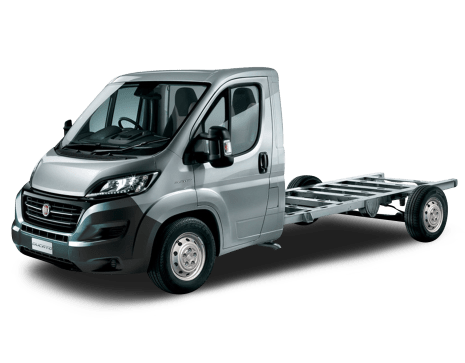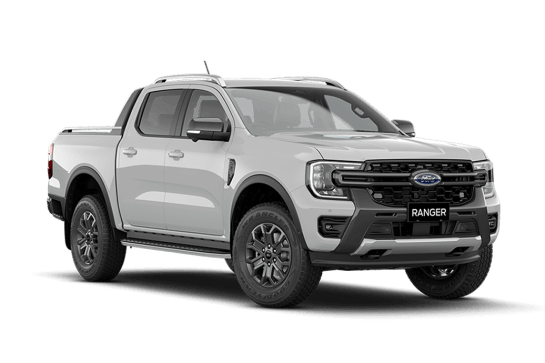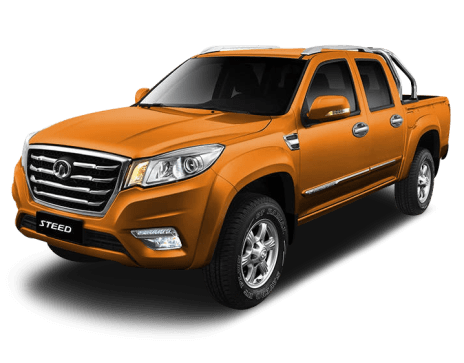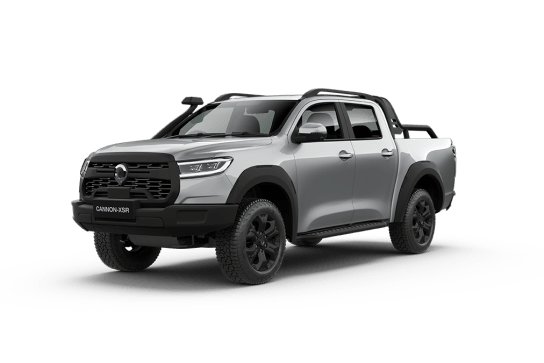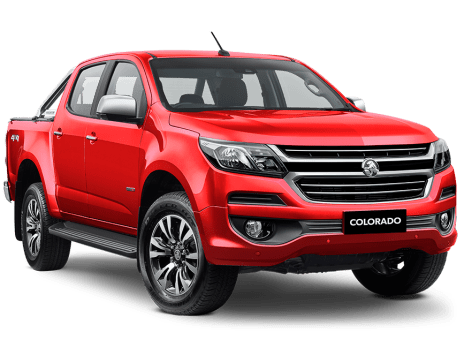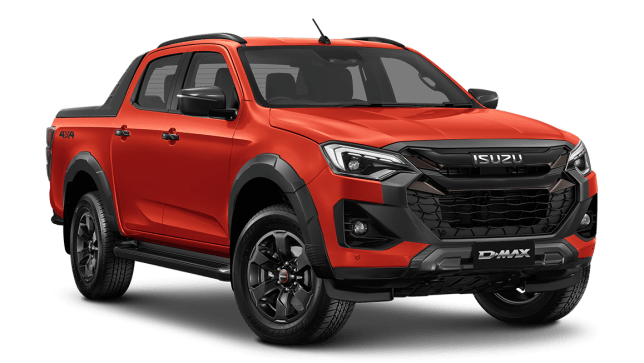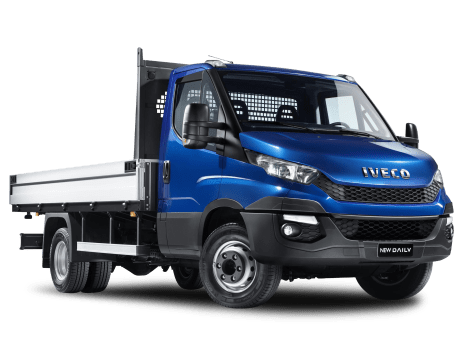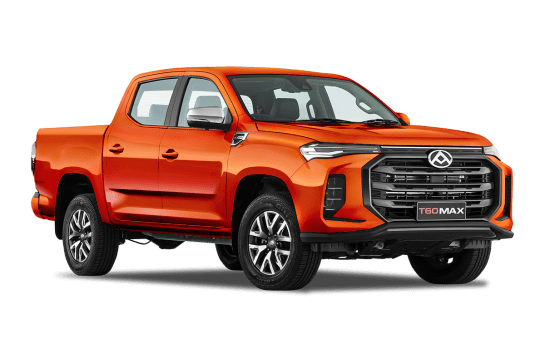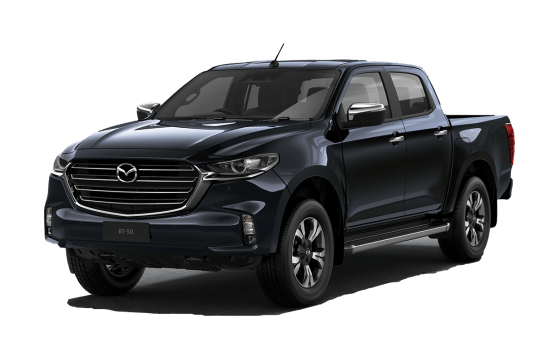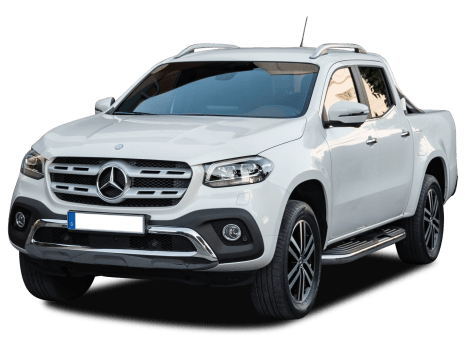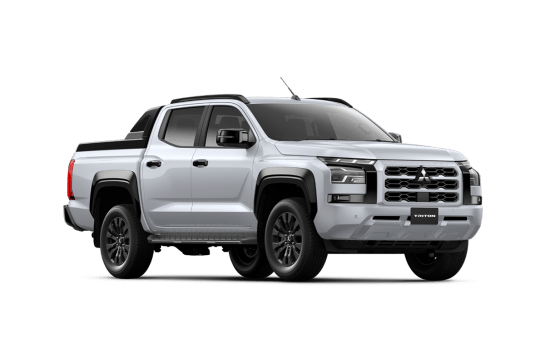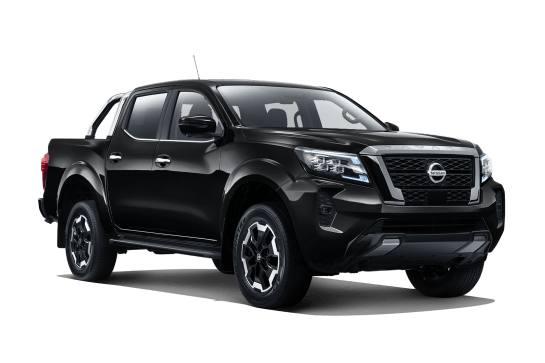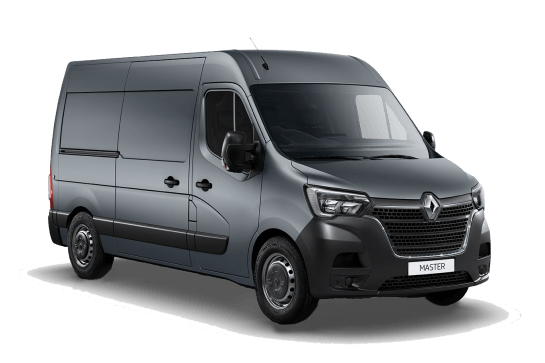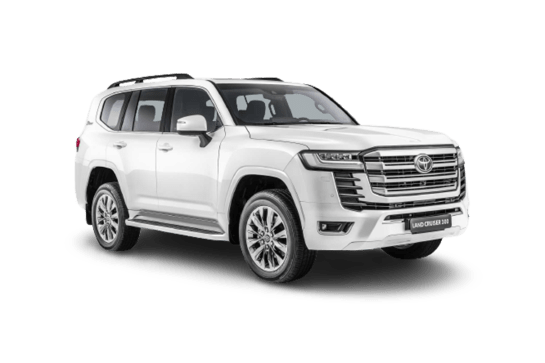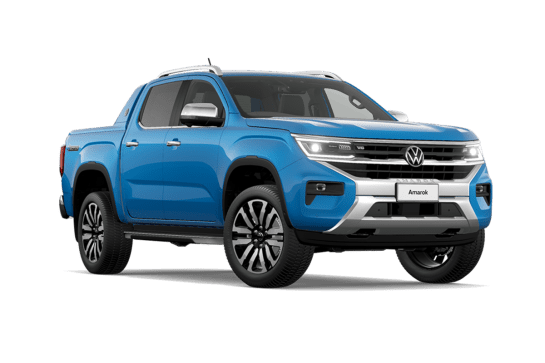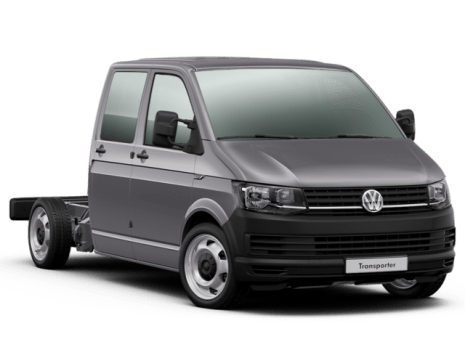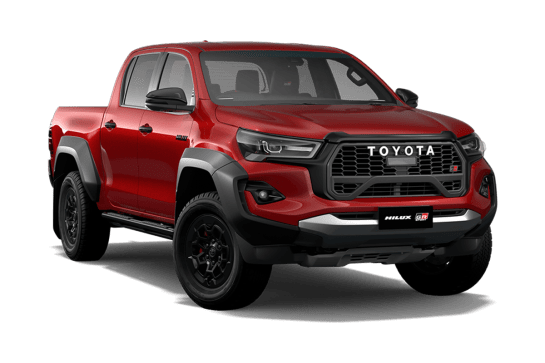
Toyota HiLux VS Mercedes-Benz X-Class
Toyota HiLux
Likes
- Build quality
- 3500kg towing
- Load-carrying ability
Dislikes
- V-Active 48V performance
- Short service intervals
- Cramped rear seating
Mercedes-Benz X-Class
Likes
Dislikes
Summary
Toyota HiLux
Since its launch in the 1960s, the iconic HiLux has been one of Toyota’s strongest-selling models. The current eighth-generation continues that tradition, even though now in its ninth year in local showrooms and having lost its long-held 4x4 sales leadership to Ford’s Ranger.
Toyota has done a commendable job in keeping the HiLux looking fresh since its local launch in 2015, with numerous cosmetic/equipment updates and the addition of prestige models like the wide-track Rogue and performance-enhanced GR Sport.
The 4x4 HiLux’s latest upgrade is the first use of Toyota's new 'V-Active' 48V technology, which provides electric assistance to the diesel engine. Toyota claims improved fuel efficiency, acceleration and smoothness, along with enhanced off-road prowess. We recently put one to the test to see how it measures up from a tradie’s perspective.
Read more about
- Toyota Australia's rolling in it! Stronger supply of key models including Toyota HiLux, LandCruiser 300, RAV4 and Corolla generates record profit for market leader
- "I'm not sure I'd want to be a single EV-only manufacturer right now": Toyota Australia said people want hybrids putting heat on electric cars such as the Tesla Model Y, BYD Seal and MG4
- "Is Toyota ok?": Japanese giant faces hard questions and mounting controversies after suspending deliveries of the Toyota HiLux and LandCruiser 300 Series
| Safety rating | |
|---|---|
| Engine Type | 2.8L turbo |
| Fuel Type | — |
| Fuel Efficiency | 7.2L/100km |
| Seating | 5 seats |
Mercedes-Benz X-Class
The V6 X-Class is big, bold and bloody expensive – and it has segment-topping safety tech– but its price-tag swiftly climbs above more than $80,000 when you start adding one of the many optional extras and is it really worth that much beyond the cache of the badge? Really?
Sure, the bigger engine is what most potential X-Class buyers were pushing for after the launch of the four-cylinder-powered utes as part of the first-gen X-Class wave, but is there room – or even actual demand – for such a high-priced supposedly luxury ute?
Read on.
| Safety rating | |
|---|---|
| Engine Type | 3.0L turbo |
| Fuel Type | Diesel |
| Fuel Efficiency | 8.8L/100km |
| Seating | 5 seats |
Verdict
Toyota HiLux7.6/10
The HiLux’s age-defying sales and resale values confirm it’s still one of the top two 4x4 dual cabs on the market. However, its new V-Active technology feels underdone, as it adds weight (we reckon about 40kg) and complexity without gains in performance you can feel or economy you can meaningfully measure. Hopefully, Toyota’s next crack at a 'hybrid' HiLux will be more convincing.
Mercedes-Benz X-Class7/10
The V6 X-Class is nice enough to drive on-road and it’s effective enough off-road, but it’s let down by its less-than-impressive interior and those elements combined certainly do not justify such a high price-tag.
Sure, its safety gear is top-notch but the X-Class, even in this V6 guise, feels like a lacklustre attempt at ute greatness, rather than a real effort.
Right now, if you’re in the market for a super-comfortable and capable V6 ute with real class and German precision, check out a top-spec V6 Amarok – and save about $25,000 while you’re at it.
Design
Toyota HiLux
The HiLux’s enduring appeal is the ‘unbreakable’ feel when you step aboard. Even though its curvaceous styling is increasingly dated, we can’t fault the build quality as it displays a peerless standard of fit and finish which never wavers.
Our only major gripe (since its launch in 2015) is the cramped rear seating. It’s particularly tight for tall people, giving that I’m 186cm and when sitting in the rear seat with the driver’s seat in my position, my knees are pressed into its backrest and my head rubs on the roof lining.
Shoulder room for three large adults is equally challenging and tolerable only for short trips. We reckon the Ranger’s more accommodating rear stalls are significant in its sales leadership.
Mercedes-Benz X-Class
From the outside, the X-Class looks pretty impressive – it’s chunky and blocky and has a real tough-truck presence.
As mentioned, a fair few of the cool exterior touches are actually paid-for options, and our tester was loaded with these extras and, as a result, looked like a work-or-play ready luxury workhorse.
So, it looks pretty good but, as always, looks can be deceiving and the interior is a very different story.
Practicality
Toyota HiLux
With its 2150kg kerb weight and 3050kg GVM, the SR5 V-Active has a 900kg payload rating. It can also tow up to 3500kg of braked trailer but with its 5850kg GCM (or how much it can legally carry and tow at the same time) that would require a substantial 700kg reduction in payload to only 200kg, which could be used up by a driver and passenger alone.
Alternatively, you could lower the trailer weight limit by the same 700kg to 2800kg (which is still a sizeable trailer) and retain the SR5’s maximum payload. We reckon most owners would do this anyway, given few (if any) would need to tow 3500kg.
The load tub is 1570mm long, 1645mm wide and 495mm deep with 1105mm between the wheel housings. Therefore, it can’t carry a standard Aussie pallet but will take a Euro-sized one. There are four load-anchorage points and we welcome the new lower/raise assistance for the hefty tailgate.
Cabin storage includes a large-bottle holder and bin in each front door, plus pop-out cupholders on either side of the dash, upper and lower glove boxes (with the upper having access to air-con) and an overhead glasses holder.
The latest centre console layout has a wireless phone-charging pad and vertical phone-storage slot, small-bottle/cupholder, a bin for small items and a box with padded lid that doubles as an elbow rest.
Rear passengers get a bottle-holder and bin in each door, pockets on each front seat backrest and a fold-down centre armrest with two more cupholders.
Only the narrower driver’s side of the 60/40-split rear seat base-cushion can swing up and be stored vertically as the passenger-side is now fixed, given the V-Active’s 48V battery resides beneath it and is ventilated by a louvered air intake in the passenger footwell.
Mercedes-Benz X-Class
I’m not a snob about interiors but if I spent almost $90 grand on a ute I’d expect it to have a very high level of fit and finish inside, plenty of storage options and an overall premium feeling inside.
That’s sorely lacking in here.
From the many hard-plastic surfaces, fake leather, brushed-aluminium sections and sort of half-hearted attempts at three-pointed star styling – such as the vents – no part of the interior looks or feels anything like the premium quality you’d expect to find in a Mercedes-Benz.
As for equipment inside, you get the 7.0-inch floating touchscreen and a few other bits and pieces but there are some glaring omissions: you don’t get a reach-adjustable steering wheel, heated seats, or real leather (our tester has the optional black leather seats fitted at a cost of $1750), you don’t get much in the way of storage anywhere, and you don’t get Apple CarPlay or Android Auto – you don’t even get a driver-side grab handle. All of those sort of mod cons, you get in a ute that costs much less than this X-Class.
Room and comfort inside is adequate but a long way from unreal for something so pricey.
Driving position is nice, with plenty of vision all-round, but everyone's seats could do with a bit more cushioning and length in the base.
In the grand tradition of all utes, the rear seat is really the realm of young children and, at a stretch, smaller adults, especially for longer trips in the saddle.
Storage is minimal in the back seat – you don’t even get a drop-down arm-rest with cup-holder.
Price and features
Toyota HiLux
The new electrically-assisted drivetrain is available only in SR/SR5 4x4 dual cabs and the Rogue, paired with the HiLux’s ubiquitous 2.8-litre four-cylinder turbo-diesel and six-speed automatic.
Our SR5 V-Active 48V test vehicle has a list price of $63,260. It’s also equipped with the optional premium interior package, which for an additional $2500 adds black leather-accented seats and door trims, heated front seats and an eight-way power-adjustable driver’s seat. Its eye-catching 'Nebula Blue' premium paint option adds another $675.
Latest MY24 updates feature a redesigned front fascia with black ‘honeycomb’ grille, plus wireless phone charging, two USB-C ports in the centre console for rear seat passengers to use and a tailgate equipped with gas-struts to ease opening/closing effort.
Otherwise, it’s the same SR5 with which we’ve grown very familiar. Standard equipment includes 18-inch alloys and 265/60R18 tyres with a full-size alloy spare, along with LED lighting, side-steps, sports bar, privacy glass and more, even though Toyota still won’t throw in a tub-liner.
Inside is remote keyless entry/start, dual-zone climate, an air-conditioned cooler box, multiple USB ports/12-volt sockets and a 220-volt outlet, premium-grade steering wheel and shifter-knob, driver’s 4.2-inch colour multi-info display, a 360-degree camera view and more.
The 8.0-inch touchscreen for the multimedia system, including six-speaker audio, appears to shrink as each year passes, but is easy to use and offers multiple connectivity including Apple CarPlay/Android Auto and digital radio. It also projects imagery for the various camera views.
Mercedes-Benz X-Class
The 350d Power ($79,415 plus on-road costs*) is the top-spec variant in a two-variant V6 X-Class range; the other variant is the Progressive, which starts from $73,270 plus on-road costs.
Our tester has a 3.0-litre six-cylinder diesel engine a seven-speed automatic transmission and permanent all-wheel drive system – all from Benz. All of those certainly make a refreshing change from the Navara-based four-cylinder model that preceded this X-Class. (Price as tested is $88,618, including GST plus on-roads.)
Standard gear includes steering-wheel paddle shifters, 19-inch alloy wheels (our tester had the optional 18-inch rim design, part of the $1990 Style Pack), body-coloured exterior parts with chrome accents, fog-lamps, dusk-sensing LED High Performance headlamps, ARTICO/DINAMICA seat upholstery, ARTICO dash and door sill covering with contrast stitching, Electric front seats with lumbar support, front foot-well, vanity and door illumination lamps, dashboard trim in aluminium and black roof liner and more.
Safety gear includes seven airbags, AEB, tyre-pressure-monitoring system, Active Lane Keeping Assist, Hill Start Assist, 360 degree surround-view camera, i-Size child seat anchorages and more.
The roof rails and side steps add to the X-Class’s commanding appearance, but those are part of the optional $1990 Style Pack, they are not standard.
The silver styling bar ($1551) and the tray liner ($899) also look cool– but they’re optional extras.
Under the bonnet
Toyota HiLux
The venerable (1GD-FTV) 2.8 litre four-cylinder turbo-diesel with V-Active produces the same 150kW and 500Nm as the standard engine, driving through a six-speed torque converter automatic.
However, Toyota claims fuel economy gains of up to 9.5 per cent when this drivetrain is combined with the new hybrid technology, which comprises a 48-volt electric motor-generator, 48-volt lithium-ion battery and idle-stop system.
The turbo-diesel engine uses a silent-belt to drive the motor-generator, which charges the battery under the rear seat. This battery, which Toyota claims weighs less than eight kilograms with 4.3Ah capacity, also supplies electricity to the vehicle’s 12-volt system through a DC/DC converter.
This system can send up to 8.4kW of power and 65Nm of torque through the motor-generator to assist the engine. Toyota claims this delivers smoother and quieter yet more responsive performance and reduces engine load under acceleration. It also results in a small reduction in idle speed from 720rpm to 600rpm.
Deceleration and braking energy are also recovered, converted into electricity and stored in the 48V battery for later use. Toyota claims “hydraulic braking combined with regenerative braking creates a more effective and natural deceleration feel and supports downhill manoeuvring.”
The idle-stop system does not use the starter motor like conventional set-ups. Instead, the electric motor-generator, which is permanently connected to the engine via its belt-drive, delivers this function with greater smoothness and quietness.
Idle-stop duration can also be extended by the driver and, when restarting the engine on inclines, the idle-stop system retains brake pressure until enough drive force is generated to ensure smooth acceleration.
In another first for HiLux, its part-time, dual-range 4x4 system (with switchable rear diff-lock) in V-Active variants is paired with 'Multi-Terrain Select' to enhance off-road ability.
The driver can switch between six traction control settings tailored to suit a variety of terrain including 'Auto', 'Sand' and 'Mud' (high- and low-range), 'Deep Snow' and 'Dirt' (high-range) and Rock (low-range).
Mercedes-Benz X-Class
The V6 350d Power V6 has a Benz-built 3.0-litre diesel engine (190kW at 3400rpm and 550Nm at 1400rpm-3200rpm), matched to a Benz-built seven-speed auto. It’s a mostly smooth combination and any perceived throttle or turbo lag can be swiftly overcome through switching to one of the more sporty of the five driving modes – one of which is actually called Sport – and making judicious use of the steering-wheel-mounted paddle shifters. The other driving modes are Comfort, Eco, Manual and Off Road and all are designed to adjust throttle input, gear changes and shift times to suit the terrain.
This X-Class has Benz’s 4Matic full-time 4WD system with 4MAT (40:60 torque split for daily driving), 4H (the X-Class’s high range, with 30:70 torque split for looser surfaces) and 4L (aka low range with a 50:50 torque split to suit low-speed 4WDing). The driver uses a simple dial – unfortunately tucked away low down, almost hidden, on the centre console – to switch between these modes.
Efficiency
Toyota HiLux
We completed a total distance of 580km, which comprised a mix of city and suburban driving with an empty load tub and up to four adults on board, plus some freeway/highway running with a near-maximum payload.
When we stopped to refuel at the end of our test, the dash display was claiming average combined consumption of 9.5L/100km, which was lineball with our own 9.4 figure calculated from fuel bowser and tripmeter readings.
Both are higher than Toyota’s official 7.2L/100km figure but within the usual 2.0-3.0L/100km discrepancy between OEM ratings and real-world figures.
Interestingly, the last time we tested a 4x4 SR5 auto dual cab ute (without V-Active) in 2023, using similar routes and payloads, we achieved 9.6L/100km. So, the V-Active’s drop in consumption was only about 2.0 per cent, compared to Toyota’s claim of up to 9.5 per cent.
So, based on our real-world figure, you could expect a useful driving range of around 870km from its 80-litre tank.
Mercedes-Benz X-Class
Fuel consumption is listed as 8.8L/100km (combined).
We recorded 10.9L/100km on test and that included plenty of low-speed 4WDing.
The V6 X-Class has a 80-litre fuel tank.
Driving
Toyota HiLux
If you’re expecting a tangible difference in performance with the V-Active system, you’ll probably be disappointed. Fact is, after almost 600km of testing, on a variety of roads with a variety of loads, we could not detect any noticeable gain in acceleration, braking or smoothness compared to a standard SR5.
That’s not to say the V-Active system is not delivering up to 8.4kW of power and 65Nm of torque, as Toyota claims. It’s just that these gains are modest and delivered so discreetly that they are undetectable in real-world driving.
This was perhaps best demonstrated when we loaded 650kg into the load tub, which when combined with our two-man crew was a total payload of 830kg. That was only 70kg shy of the payload limit.
It made light work of our 13 per cent gradient 2.0km set climb at 60km/h by self-shifting down to fourth gear at 2250rpm, where it tapped maximum torque to easily haul this payload to the summit.
However, in our previous test of a standard SR5, on the same incline with 100kg more payload, the gear selection and engine rpm were the same as the V-Active. The same applied to engine-braking on the way down.
Mercedes-Benz X-Class
Well, this is where the news gets a little bit better.
The V6 is a much better fit for the X-Class than the four-cylinder and it works well with the seven-speed auto, punching the more-than-2190kg ute along – although there is, at times, a substantial delay between foot down and go-time but, as mentioned earlier, that can be overcome by switching to Sport and using the paddle shifters.
It does sit nicely on the road, and ride and handling are generally okay with the X-Class only infrequently revealing some of the skips and jitters you’d expect of an unladen ute.
The coil-spring suspension tends to yield a spongy, comfortable ride rather than the too-firm ride of a ute, especially those of the leaf-spring variety, with nothing onboard.
Steering is pretty sharp and, despite its bulk, the X-Class is reasonably easy to manoeuvre for its size on- and off-road. It has a 12.8m turning circle.
Safety
Toyota HiLux
The HiLux achieved a maximum five-star ANCAP rating in 2019, so its six-year validity will expire next year. Even so, there are seven airbags plus AEB with pedestrian and daytime cyclist detection, blind-spot monitoring, rear cross-traffic alert, lane keeping, active cruise control, speed-sign recognition, panoramic view/reversing camera and more.
The rear seat offers ISOFIX child-seat mounts on the two outer seating positions plus top-tether restraints on all three seating positions.
Mercedes-Benz X-Class
A big plus in the X-Class’s favour is its class-leading suite of active safety tech including AEB, lane keeping assist, as well as that 360-degree view camera and more.
It has seven airbags, and a five-star ANCAP rating.
Ownership
Toyota HiLux
Toyota covers the HiLux with a five-year/unlimited km warranty which is par for the course in the mainstream market.
Service intervals are relatively short at six months/10,000km whichever occurs first. Capped-price servicing for the first five years/100,000km totals $3889 or an average of $779 per year.
Mercedes-Benz X-Class
A three-year/200,00km warranty applies to this ute. Service intervals are up to one year/20,000km.

